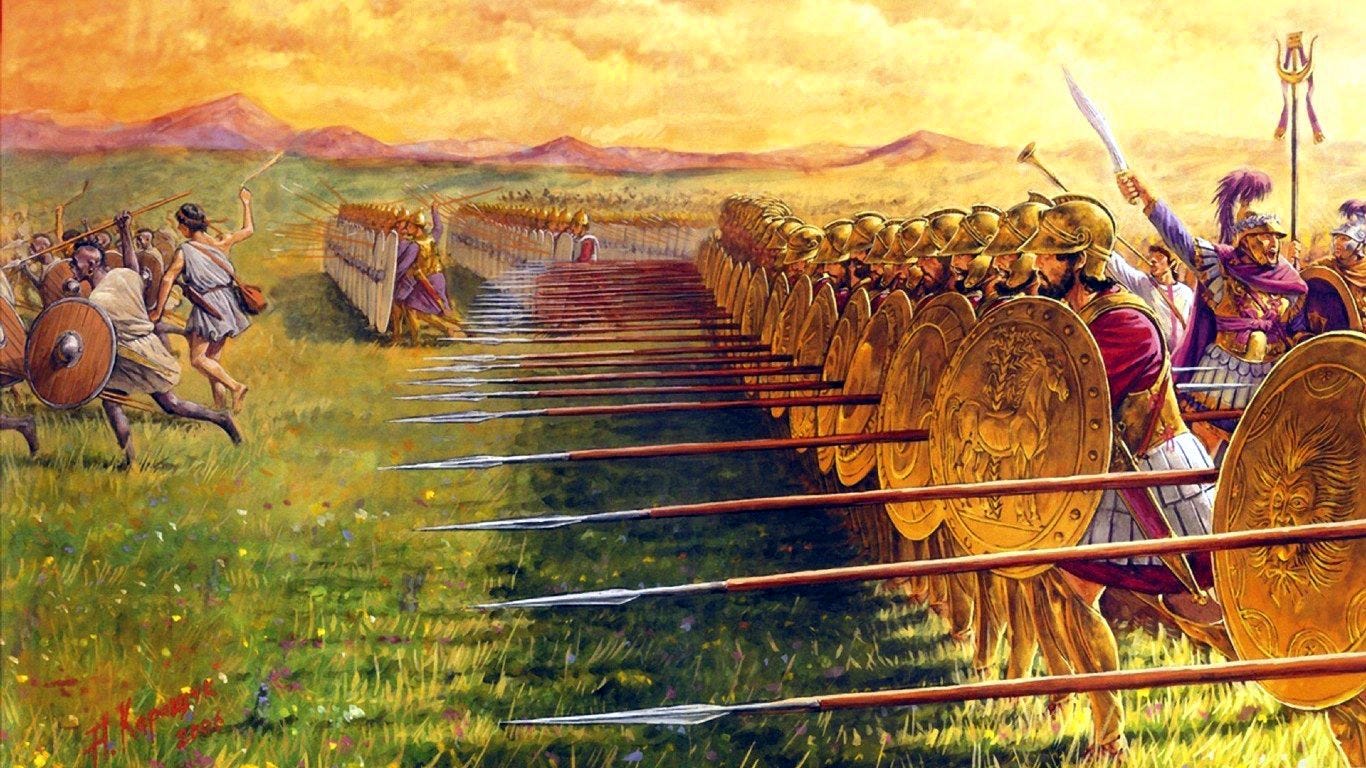Carthage: From Merchants to Mercenaries, Carthage's Military Might In Antiquity
Part Two of Three
Established in 550 B.C.E by Mago I then King of Carthage, the first military force created by Carthage was a citizens' army formed for the dual mentality of home defense of the port city while not requiring the need for extensive training or financial capital to operate. This was accompanied by the strong naval traditions that their Phoenician ancestors had past-down to them, making Carthage one of the strongest non-Greek city-states of the Ancient Mediterranean. While in the 5th and 4th centuries B.C.E, the Carthaginian army was mostly made up of native-born citizens from the original colonial families, by the beginning of the 3rd century B.C.E the leadership of Carthage began to rely more and more on bands of mercenaries to fill-in ranks. This was done to limit citizens' loss of life during a time of war but resulted in a need for opulent financial backing.
Carthaginian Citizen Hoplite. Source: https://www.aresgames.eu/21446
Like many Mediterranean city-states of the era, Carthage's military doctrine was formed around the idea of a hoplite center made up of citizens who would fight based either on emergency situations or planned campaigning. The navy on the other hand was crafted from a group of dedicated professional marines, they would also double as merchants when not at war. Taking observation of the tactics used during the successful campaigns under Alexander The Great of Macedon (356-323 B.C.E), Carthage began to implement the use of several ranks of shielded soldiers armed with 7ft long spears known as Sarissas. Their job was to hold the front rank of enemy forces whilst in a phalanx formation until flanking Calvery or infantry destroyed the enemy's formations.
In addition to the phalanx, they fielded slingers, bowmen, and light cavalry as skirmishers to support the main battle lines. Few if any citizens participated in the military as part of this skirmisher group, most were the previously mentioned mercenaries. While these varied by location and era of Carthaginian military history, certain ethnic groups were hired for these roles. Numidians were always a constant supply of light cavalry brigades, in Spain; many tribes swore fealty to Carthage as slingers/javelin-men. Finally, many displaced Greeks and Celts came to fill the light infantry roles of many Carthaginian armies.
Various Carthaginian mercenaries. Source: https://thelosttreasurechest.wordpress.com/2011/05/05/historical-warrior-illustration-series-part-lx/carthaginian-mercenaries/
Like many of their Greek counterparts, the Carthaginians also created an elite corps of noblemen that had chosen war as a career. This select class of soldiers only fought in times of need and were given the title of The Sacred Band for their ability to save battles (even against great odds). Better equipped due to inherited wealth and forced to train daily, this hoplite determined many of the early conflicts that Carthage had faced. While Plutarch records the numbers of this elite group to be as high as 10,000 in its prime; many contemporary historians place the number closer to 2,500-5,000 at its highest.
The Carthaginian Citizen Militia (Late 1st Punic War). Source:https://www.realmofhistory.com/2018/05/01/facts-ancient-carthage-army/







